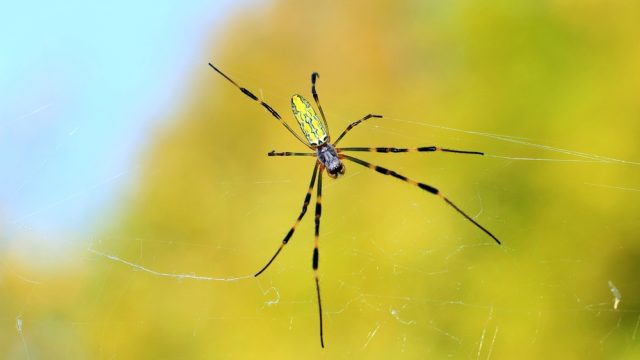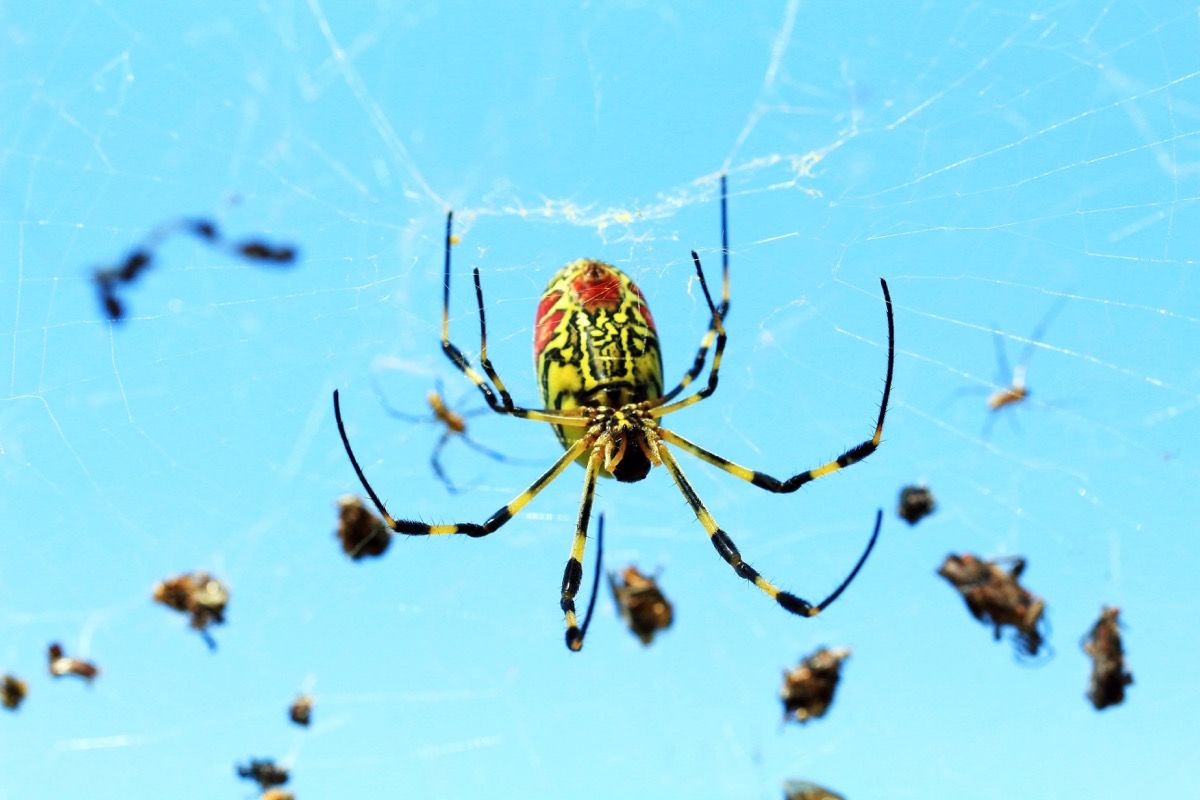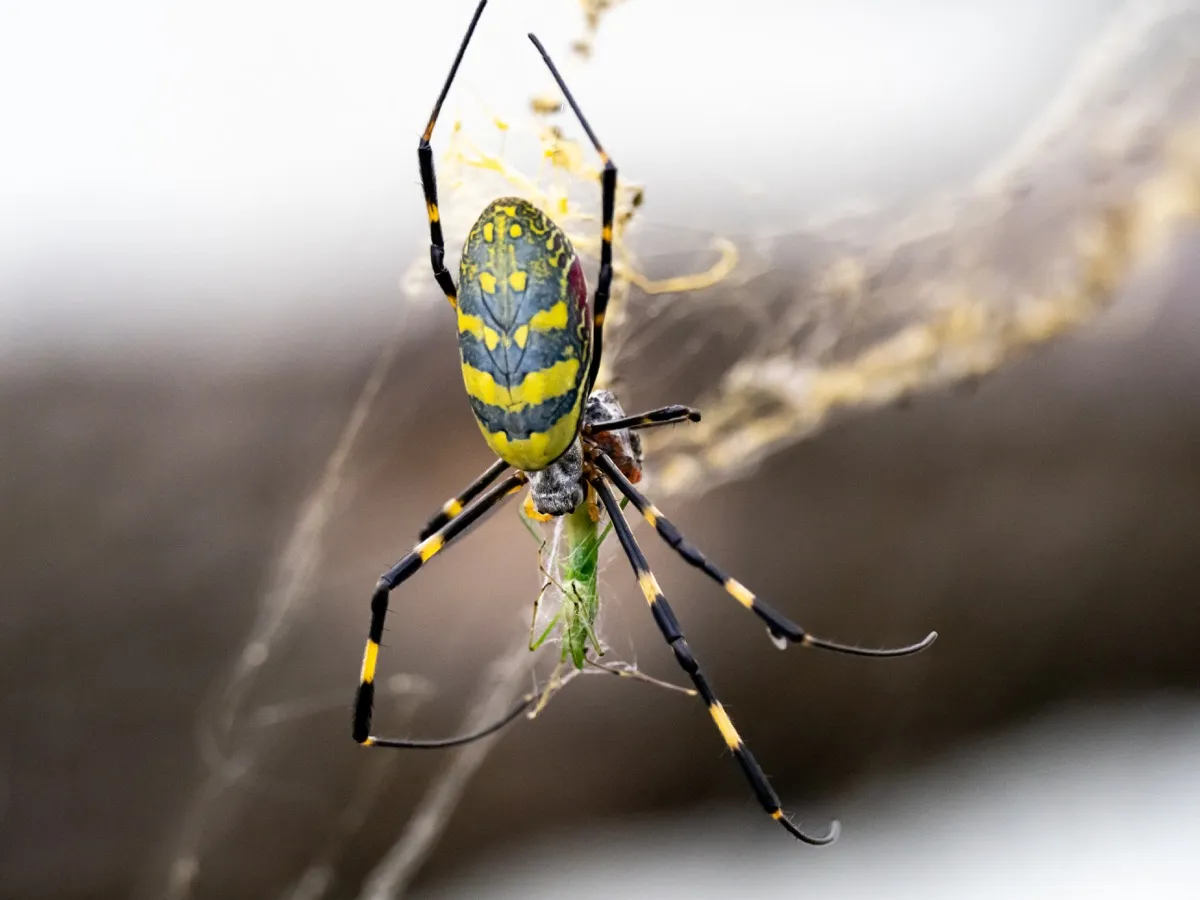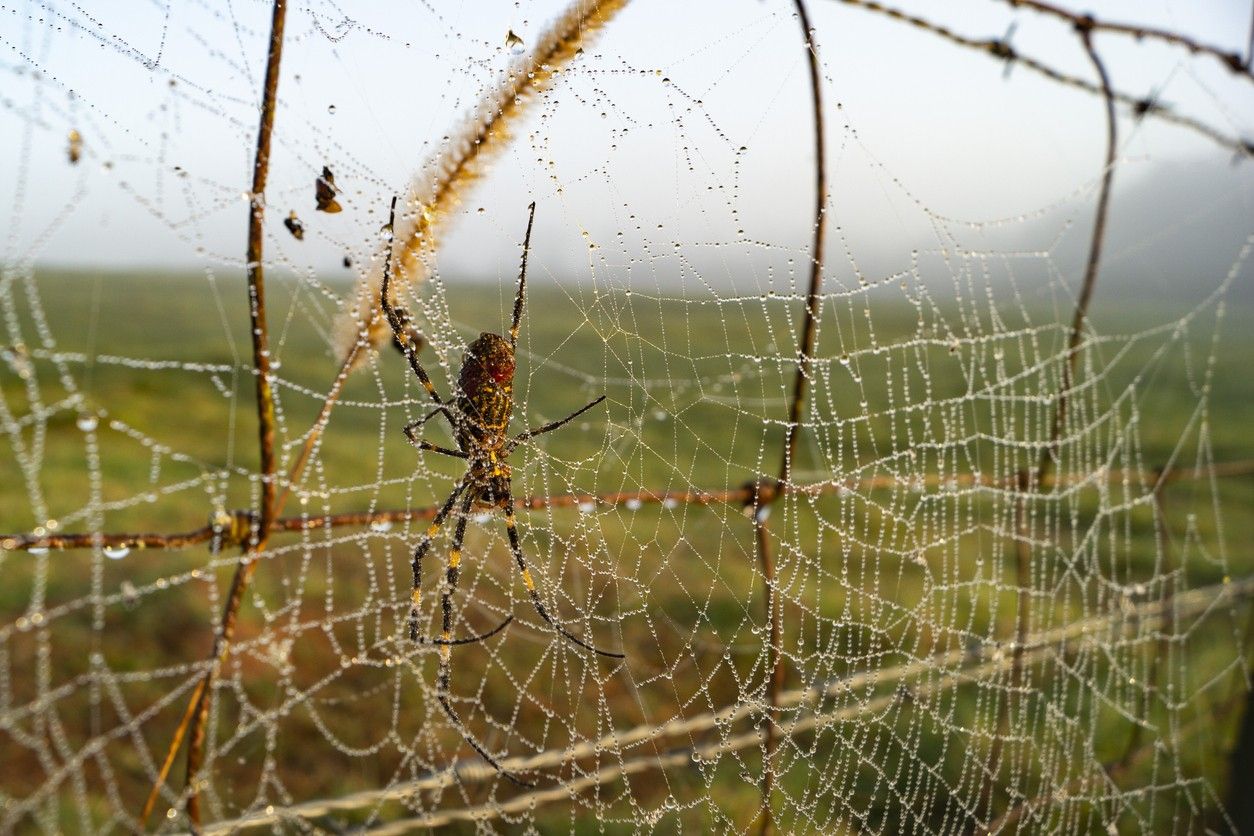If You Live Here, Watch Out for Giant Spiders Falling From the Sky

Spiders are an essential part of the ecosystem in most parts of the world, eating insects that might otherwise be obnoxious or even dangerous to humans, such as mosquitos. But their good deeds often get quickly forgotten whenever they take us by surprise or end up somewhere we don’t expect them to be, like inside your home. Now, experts are warning that giant spiders could soon begin to fall from the sky in certain areas as they continue to spread across the U.S. Read on to see which places might expect it to start raining arachnids.
RELATED: If You See This Bug in Your Home, Call an Exterminator Immediately.
An invasive of Joro spiders will likely soon spread up the East Coast, experts say.

Arachnophobes may want to take note: Scientists are warning that palm-sized Joro spiders, which are now becoming a common sight in the Southeastern U.S., will likely begin to spread north soon. According to a new study published in the journal Physiological Entomology, the invasive species was found to be able to survive briefly at freezing temperatures, making it likely their habitat will soon include most of the Eastern Seaboard, NPR reports.
Benjamin Frick, co-author of the study and an undergraduate at Odum School of Ecology, University of Georgia, explained to local Atlanta CBS affiliate WGCL why this might be: “No predators, it doesn’t have anything that’s controlling its population size in the new habitat, but it has perfect conditions to spread.”
The spiders travel by ballooning, using their webs to ride the breeze like a parachute.

Researchers say that one of the spider’s characteristics is that recent hatchlings use their webs to spread by ballooning, which allows them to travel on the wind to new locations. But scientists have also found that as well as floating on a breeze, Joros are also excellent hitchhikers and stowaways. In fact, many think the spider first arrived in the U.S. in 2013 after catching a ride on a shipping container from Japan or China.
“The potential for these spiders to be spread through people’s movements is very high,” Frick told UGA Today, a publication by the University of Georgia (UGA). “Anecdotally, right before we published this study, we got a report from a grad student at UGA who had accidentally transported one of these to Oklahoma.”
RELATED: For more up-to-date information, sign up for our daily newsletter.
Joro spiders can be up to three inches long and spin a unique golden web.

Joro spiders can measure up to almost three inches across when their legs are fully extended, so they’re really “hard to miss” due to their larger size, according to UGA Today. Byron Freeman, director of the Georgia Museum of Natural History and part of the team that first identified the spider in the U.S., says they’re most noticeable by their distinctive yellow, blue, and black stripes on their backs and legs, although some have solid black legs. A unique red marking is also visible on their undersides.
Compared to typical cobwebs, Joro spiders create enormous three-dimensional webs that look like they’re spun from golden silk. They also tend to be built higher off the ground than some other spiders’ webs.
Experts say the spiders aren’t harming the environment and are unlikely to bite people.

Even though the invasive of these arachnids may have a striking appearance compared to your average spiders, experts say that Joros don’t appear to be harming the environment or damaging agriculture in any way. “People should try to learn to live with them,” Andy Davis, a research scientist in the Odum School of Ecology and one of the authors behind the recent study, told UGA Today. “If they’re literally in your way, I can see taking a web down and moving them to the side, but they’re just going to be back next year.”
And if you do come across a Joro unexpectedly, you’re unlikely to get much more than a quick fright: Scientists say the naturally timid spiders aren’t looking to bite humans. “Its fangs are so small relative to most human skin that it probably won’t be able to get its fangs into you even if it wanted to,” Frick told WGCL.
RELATED: If You See This Bug in Your Home, Don’t Step on It, Experts Warn.